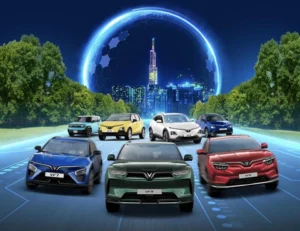The shift in consumer behavior and the pace of technological development are expected to create a more vibrant retail market by 2025.
Reports from NielsenIQ and AppotaPay both emphasize that Vietnamese consumers are increasingly paying attention to product quality. 78% of consumers are willing to pay more for higher quality products. The trend of green and sustainable consumption continues to grow strongly. In addition, e-commerce will not only promote digital economic growth but also contribute to helping Vietnam achieve its target of greater retail revenue, with 10% of total retail revenue coming from e-commerce next year.
The development of technology has not only made e-commerce a major driving force but also promoted models such as omnichannel shopping, where consumers can combine online and in-store purchases. The report from AppotaPay also shows that 25% of consumers shop online to stock up on goods and 21% buy to meet immediate needs, showing the growing importance of the combination of e-commerce and traditional retail.
Economist Vo Tri Thanh commented: “Vietnam’s digital economy currently accounts for 13-14% of GDP, with the goal of accounting for 20% of GDP by 2025. This is a golden opportunity for Vietnam to catch up with global trends and take advantage of digital transformation.”
According to Ms. Lai Viet Anh, Deputy Director of the Department of E-commerce and Digital Economy, to achieve the e-commerce export target of more than 11 billion USD by 2027, businesses need to apply digital technology in the supply chain, while ensuring environmental and sustainable development criteria.
Meanwhile, Associate Professor Dr. Tran Minh Tuan emphasized that the retail market in 2025 will continue to be a playground full of opportunities and challenges. Accordingly, e-commerce will not only promote digital economic growth but also contribute to helping Vietnam achieve the target of larger retail revenue, with 10% of total retail revenue coming from e-commerce by 2025. In order not to fall behind, businesses need to proactively anticipate consumer trends, take advantage of technology and innovate to meet the increasing needs of customers.
















